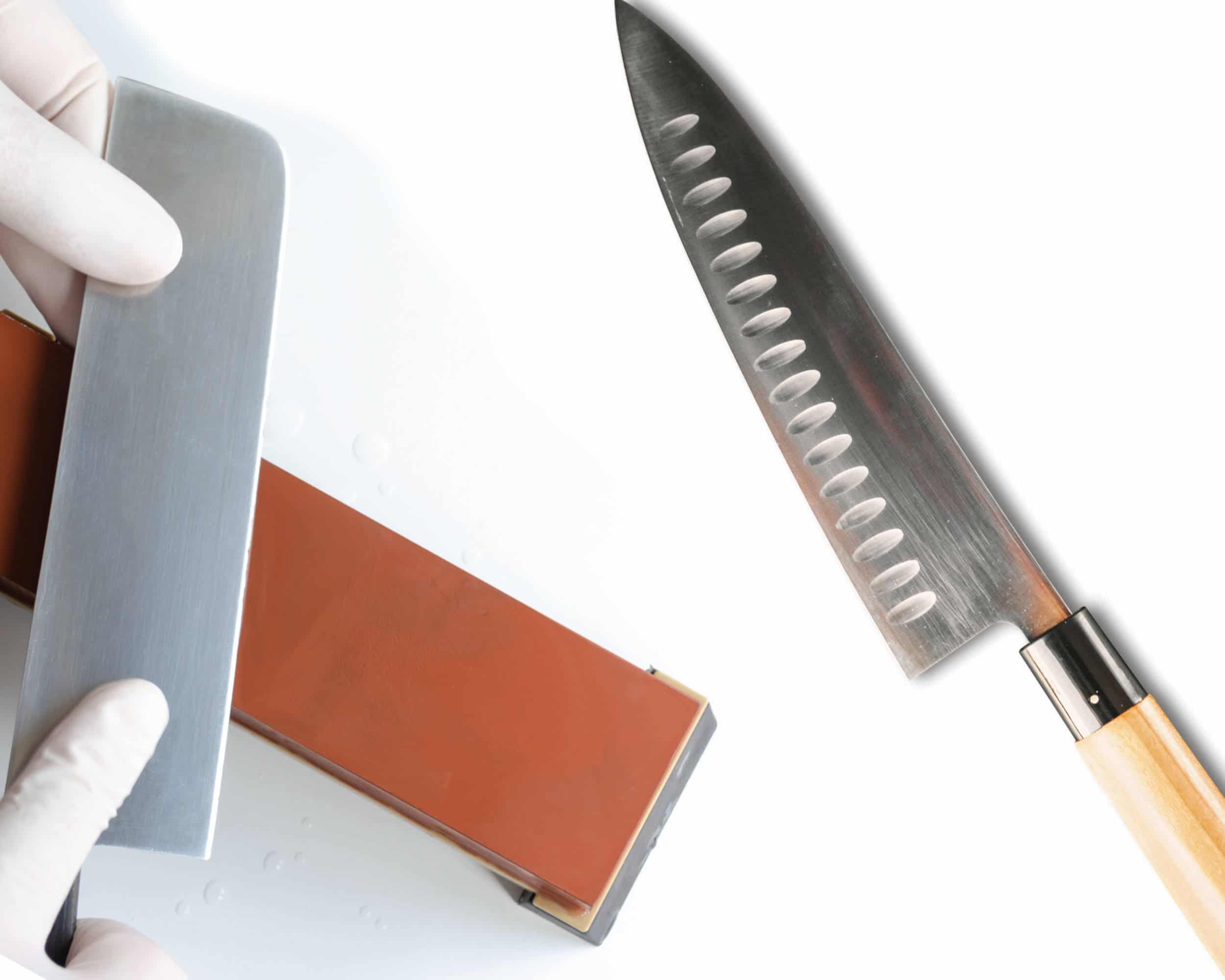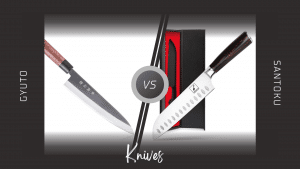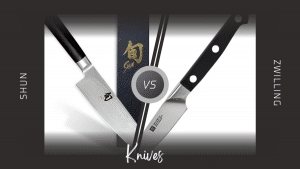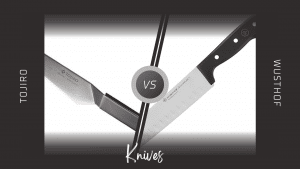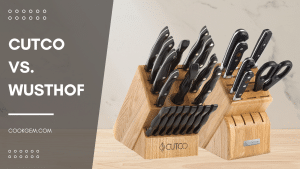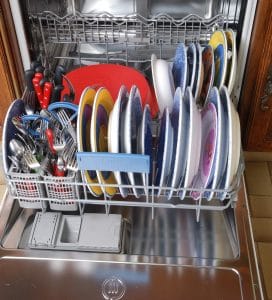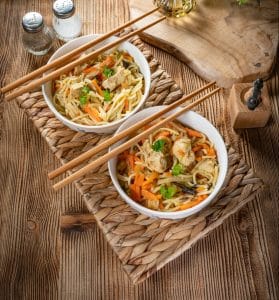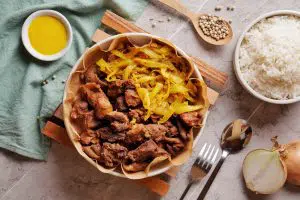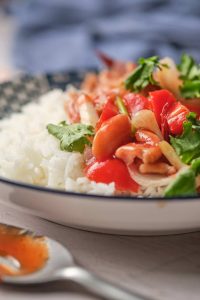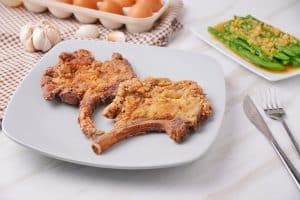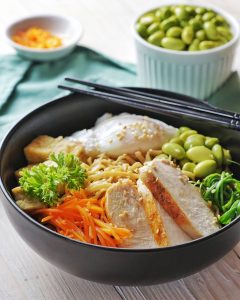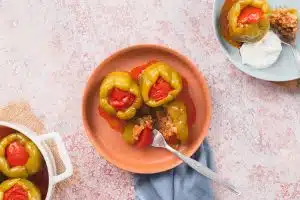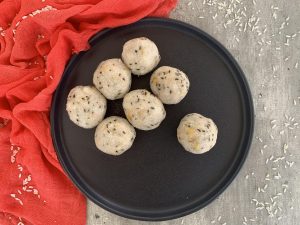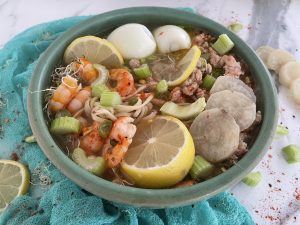Nakiri vs. Santoku Knives: What’s The Difference?
Important Note: When you buy through our links, we may earn a commission. As an Amazon Associate we earn from qualifying purchases. Content, pricing, offers and availability are subject to change at any time - more info.
Nakiri and Santoku knives are two Japanese knives that are quickly growing in international popularity. Many chefs and home cooks use these knives, as they are typically used for the same purposes in the kitchen. If these knives are used for similar purposes, how are they different, and which knife is best for you?
The Nakiri is an adapted Chinese cleaver, typically used for vegetables, but is a multi-purpose kitchen knife. The Santoku is an adapted western chef’s knife intended for Japanese cooking styles. The Santoku is far more versatile than the Nakiri and better suited for most kitchens.
Japanese knives are thought to be some of the best knives in the world, and for this reason, many gravitate toward the Nakiri and the Santoku for use in their kitchen. These are both multi-purpose knives, but they have design features that make them better suited for specific tasks. Let’s compare these knives to determine which is best for you.
The Nakiri
The Nakiri is an interesting knife and is either loved or hated by many chefs. This knife is something that you love to use or hate to use. There is no in-between.
The Nakiri is a Japanese kitchen knife adapted from the Chinese cleaver. The Nakiri blade is straight, short, and wide, as the knife is intended for chopping vegetables. The Nakiri blade is relatively thin, but it can be difficult to keep sharp for everyday use.
The Chinese kitchen cleaver, the knife that the Japanese Nakiri was adapted from, was designed for cleaving food in the kitchen, using a straight downward chopping motion. This means that that the Nakiri is designed to be used with the same technique.
However, some design features of the Nakiri prevent it from being used effectively in this way.
The Nakiri is a short knife, significantly shorter than a regular chef’s knife, and features a wide, rectangular blade. The blade is significantly narrower than that of a cleaver, so it lacks the weight and power of a cleaver.
This knife is very thin and very light, which is also very different compared to the cleaver. The thin, wide, short, square blade of the Nakiri means that it is better suited for chopping vegetables than any other uses, but it can be used for almost anything in the hands of a skilled chef.
The unique design of the Nakiri means that I cannot be used with the same technique as the Chinese cleaver. For the best results, the Nakiri must be used with a downward and forward chopping motion rather than a straight downward chopping motion.
The thin blade of the Nakiri means that it is quite difficult to maintain and keep sharp, but it is very easy to use. This knife is ideal for hopping and processing vegetables and is excellent for advanced techniques such as creating ribbons from vegetables such as cucumbers.
There are some distinct advantages to using the Nakiri, but it is a knife that is very well suited for some things and not well suited for others. This is not a particularly versatile knife and cannot be used for everything that a typical chef’s knife can be used for.
The Santoku
The Santoku is a unique knife, as it was originally adapted from the western chef’s knife to provide a similarly versatile knife for Japanese cooking styles and techniques but has recently been re-adapted by western chefs into a more western chef’s knife style. This knife has been adapted twice – first from a chef’s knife and then into a chef’s knife.
The Santoku is a Japanese-style chef’s knife. It is a versatile knife that is available in many varying designs. This knife is good for most kitchen uses and is comparable to a typical chef’s knife in some ways. The Santoku is ideal for home kitchens due to its shorter length.
This type of Japanese kitchen knife was originally adapted from a western chef’s knife to better accommodate Japanese kitchen techniques. Japanese chefs typically chop with a down-forward-up motion, rather than the western style of chopping called “rocking,” and the chef rocks the knife back and forth on the cutting surface while chopping.
To accommodate the Japanese cooking techniques, the Santoku is designed with a shorter, lighter, thinner blade to allow for the Japanese-style chopping motion. This knife has a somewhat pointed tip but not as pointed as a chef’s knife.
The Santoku is very comfortable to use and very versatile. This knife is ideal for most kitchen uses, but the shorter length of the Santoku means that it is not preferred by professional chefs and is typically used in home kitchens.
However, since the Santoku has become more popular in the west, a new type of Santoku has become more common – the hybrid profile Santoku.
The hybrid profile Santoku is a Japanese Santoku knife with a more curved edge profile. This allows the knife to be used with western kitchen techniques, such as rocking, and makes the knife significantly more versatile.
The hybrid profile Santoku is an excellent all-purpose kitchen knife and is used in both home kitchens and professional kitchens due to its lightweight, versatility, useability, and overall ability of this knife to maintain a sharp cutting edge.
Nakiri Vs. Santoku: How Do These Knives compare?
The Nakiri and the Santoku are both Japanese-style kitchen knives that are becoming increasingly more popular in international kitchens and are even being adapted for the kitchen techniques of countries other than Japan. How do these knives compare?
The Nakiri and the Santoku are both multi-purpose knives, but the Nakiri is ideal for chopping vegetables, while the Santoku is more versatile. The Nakiri is a good knife for beginners and non-professionals as it is very safe and easy to use. The Santoku is versatile and better for professional chefs.
Nakiri knives are square, wide, short, and very lightweight. This makes them very easy knives to use and control safely. This also allows for very smooth and quick chopping motions, allowing food to be prepared very quickly.
However, the Nakiri is not very versatile. It is not great for use with meat or fish, and its short length means that larger vegetables must be processed in sections. The Nakiri is ideal for prepping vegetables and performing complex vegetable prep techniques, but outside of that, these knives are not particularly useable.
Santoku knives are far more versatile than Nakiri knives, especially hybrid profile Santoku knives. These knives are well suited for various cooking techniques. They are very easy to keep sharp, light and easy to hold, ideal for chopping and preparing all types of food items, and have a more pointed tip allowing for a wider range of versatility.
The only downside of the Santoku compared to the Nakiri is that it is less well-suited for the chopping motion and can therefore be more difficult to use for some chefs.
The short length of the Santoku is also a limitation for the knife, but it is typically slightly longer than the Nakiri, which is a slight advantage for the Santoku over the Nakiri.
The Santoku and the Nakiri are both very useable knives, but when compared, the Santoku is the better knife for most kitchens simply because it is the more versatile tool.
Nakiri Pros And Cons
The Nakiri knife style is not an original design. It is based on the Chinese cleaver, which means that it has some distinct drawbacks. However, the design of this knife is unique and very well suited for several kitchen tasks.
Let’s discuss some of the pros and cons of the Nakiri knife style to better compare it to the Santoku knife style.
Pros Of Nakiri Knives
The pros of using a Nakiri knife include:
- Nakiri knives are very lightweight.
- Nakiri knives are very easy to use.
- Nakiri knives are ideal for chopping and processing vegetables.
- Nakiri knives are very comfortable in the hand.
- Nakiri knives are good for transferring chopped food.
- Nakiri knives are excellent for a chopping motion.
Cons Of Nakiri Knives
Some of the cons of using a Nakiri knife include:
- Nakiri knives are not very versatile.
- The thin blade makes Nakiri knives difficult to keep sharp.
- Nakiri knives are shorter than other kitchen knives.
- Nakiri knives are not ideal for meat or fish.
- Nakiri knives cannot be used with the rocking chop motion.
Santoku Pros And Cons
Santoku knives are also a Japanese adaptation of another type of knife and have been adapted even more still, but there are some distinct pros and cons of using this type of knife in any kitchen.
Let us consider the important pros and cons of using the Santoku style knife to better compare it to the Nakiri style kitchen knife.
Pros Of Santoku Knives
Some of the pros of using a Santoku knife include:
- Santoku knives are very versatile.
- Santoku knives are ideal for chopping and processing most food items.
- Santoku knives have a more pointed tip.
- Santoku knives are lightweight.
- Santoku knives are easy to use.
- Santoku knives are easy to control.
- Santoku knives can be used with various cooking techniques.
Cons of Santoku Knives
Some of the cons of using a Santoku knife include:
- Santoku knives are short, making them less useable.
- Santoku knives require more practice to use than the Nakiri.
- Santoku knives are less comfortable in the hand.
- Finding a good Santoku knife is very challenging.
Is The Nakiri Or The Santoku Better For You?
Now that we have thoroughly compared the Nakiri and the Santoku knife styles, let’s take some time to try and help determine which type of knife is best for you and your kitchen.
The Nakiri is an ideal knife for the person who enjoys using various knives for their intended purposes. The Nakiri is not a versatile knife, but it is excellent for chopping and processing vegetables, so it has its ideal place in the kitchen.
This means that if you are the type of person who is comfortable switching knives while preparing a meal to better use the qualities of different knives, then the Nakiri will and its perfect home in your kitchen.
The Nakiri is interesting, beautiful, and well designed. These knives are very easy to use, especially for those who are learning how to chop quickly and for those who are interested in Japanese-style knives.
The Santoku, however, is an ideal knife for every kitchen. The modern hybrid profile Santoku, in particular, is a very versatile kitchen knife and can be used for chopping, cutting, and processing almost every type of food item.
This is the ideal knife for the person who prefers to use only one knife while cooking. This knife can be used for vegetables, meat, and fish alike and is a very useable tool in the kitchen.
Using a Santoku requires some practice, but with time any chef will be able to use this knife to its fullest. The biggest drawback to the Santoku is that it is not a particularly long knife, which makes processing larger items more challenging. Other than that, the Santoku is ideal for any kitchen and for any cooking style.
Both of these knives are useful in any kitchen, but which type is better for you is determined by your workflow. If you enjoy using various knives, the Nakiri is the blade for you, but if you prefer using only one multi-function tool, the Santoku is your better option.
So, What’s The Difference?
The Nakiri and the Santoku are both very interesting knives adapted from other knife types. The cleaver style of the Nakiri makes it ideal for processing vegetables quickly, and the more chef’s knife style of the Santoku makes it a more versatile tool.
Both of these knives have their own place in the kitchen and their own unique intended function.
At the end of it, both knives are good for every kitchen. Take the time to try both knives, perhaps purchasing a very cheap version of both to determine which is the better tool for you. Once you have determined which you refer, invest in a high-quality version for the best experience.
